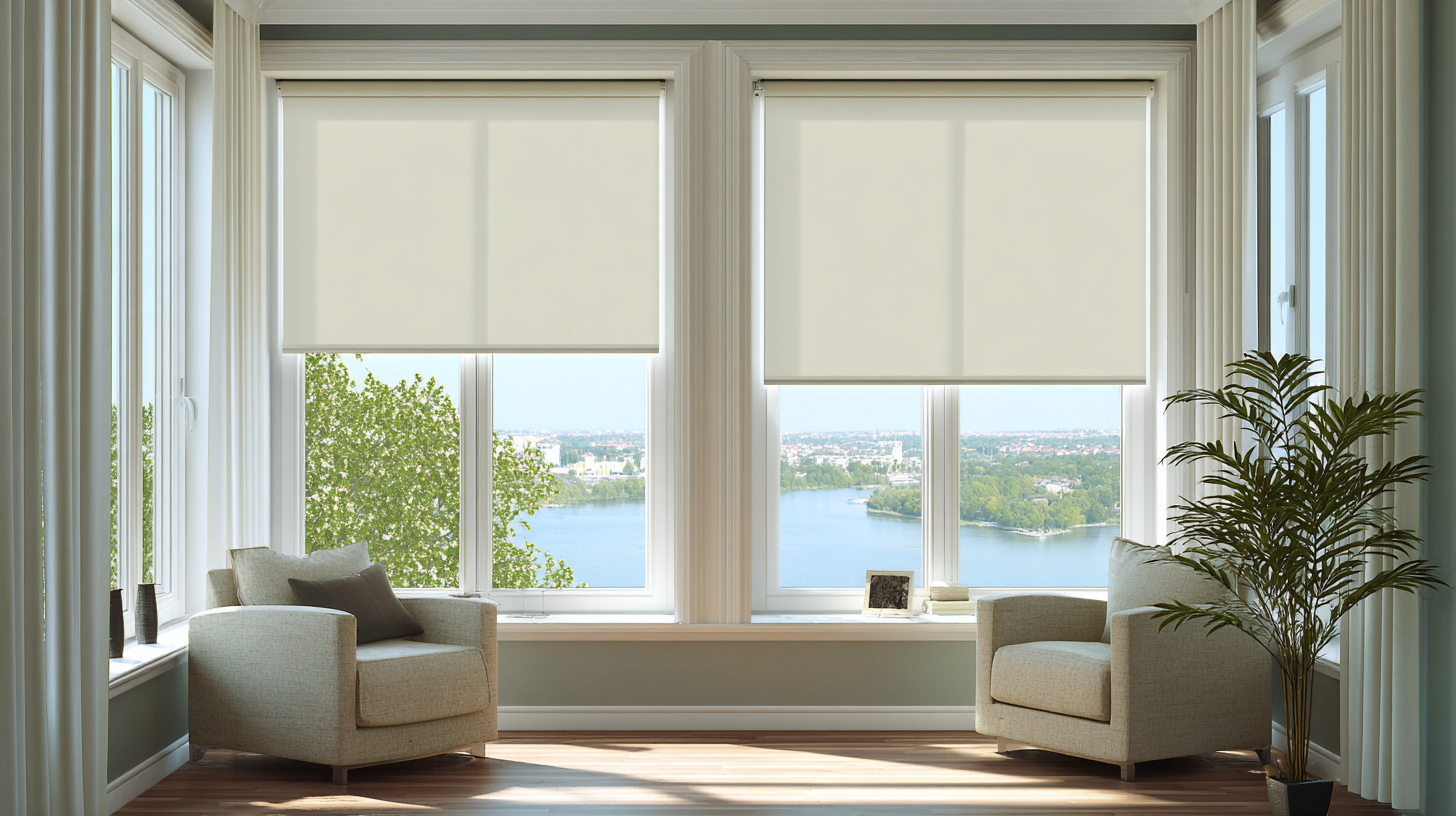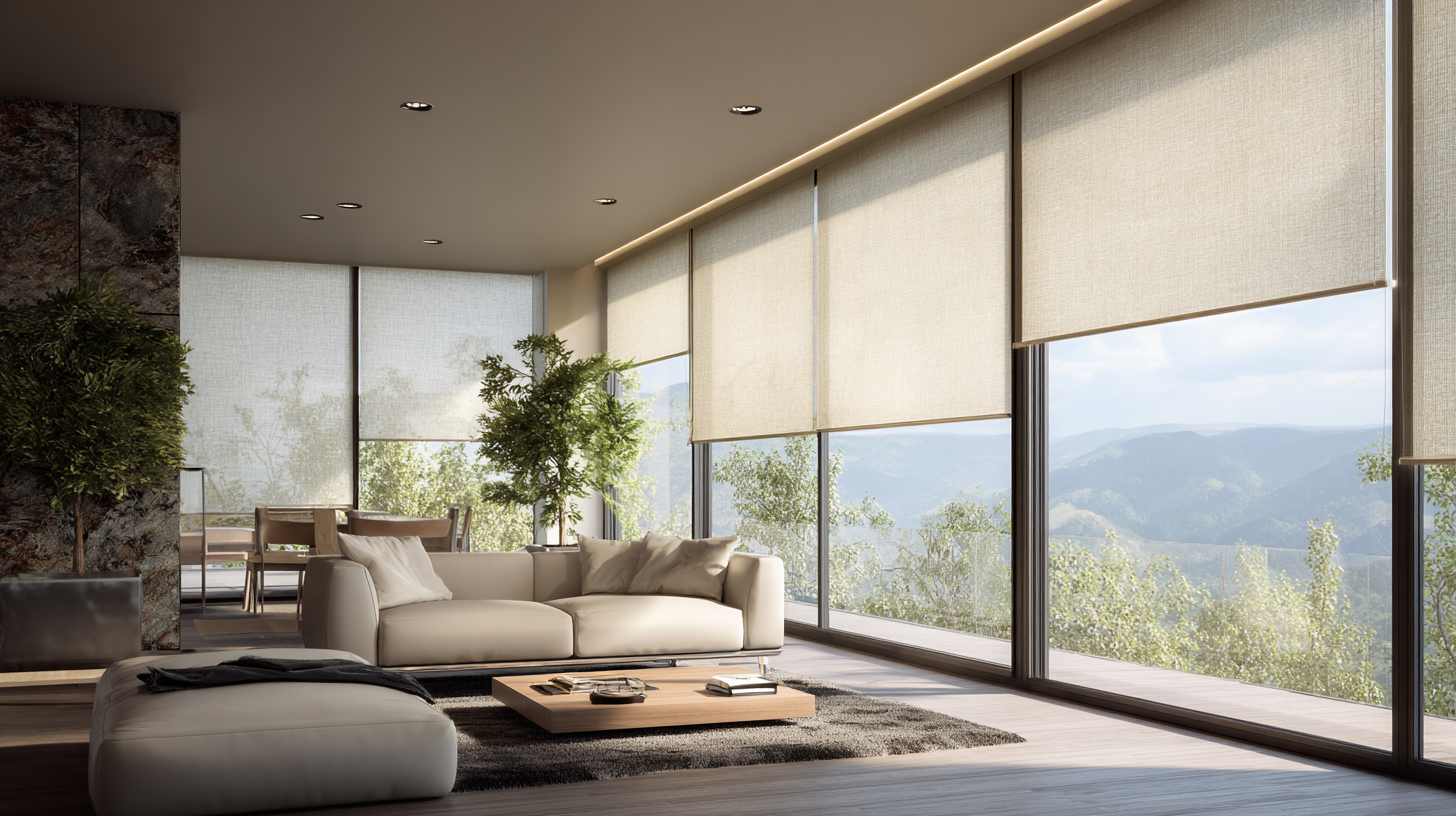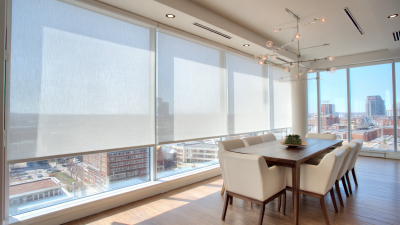BLOG
Transform Your Home: The Ultimate Guide to Choosing Electric Blinds for Windows
As modern homeowners increasingly prioritize energy efficiency and style, the demand for innovative window treatments has surged, making electric blinds for windows a popular choice. According to a recent report by Grand View Research, the global market for smart window coverings is expected to grow at a compound annual growth rate (CAGR) of 23.6% from 2021 to 2028, reflecting the escalating preference for automated solutions. This shift is not only driven by aesthetic appeal but also by the functionality of electric blinds, which enhance insulation and reduce energy costs by effectively controlling natural light and heat.

In this ultimate guide, we will delve into essential tips for choosing the right electric blinds for windows, ensuring that you can transform your home into a stylish and efficient living space while keeping up with industry trends.
Understanding the Benefits of Electric Blinds: Enhancing Comfort and Efficiency
Electric blinds are an innovative solution that significantly enhance both comfort and energy efficiency in homes. One of the primary benefits of electric blinds is their ability to automate light control. By adjusting the blinds with the touch of a button, homeowners can easily regulate the amount of natural light entering their spaces. This not only creates a more comfortable living environment but also helps to protect furniture and flooring from UV damage, extending their lifespan.
In addition to comfort, electric blinds contribute to energy efficiency. By programming the blinds to open and close based on the time of day or temperature, homeowners can reduce their reliance on heating and cooling systems. For instance, closing blinds during the hottest parts of the day can keep interiors cooler, thus lowering air conditioning costs. Furthermore, electric blinds can be connected to smart home systems, allowing for synchronized control with other devices, enhancing both convenience and overall energy management in the home.
Key Features to Look for When Choosing Electric Blinds for Your Windows
When selecting electric blinds for your windows, there are several key features that can significantly enhance convenience and functionality. Firstly, consider the control options available. Modern electric blinds often come with remote control, smartphone apps, or even smart home integration allowing users to effortlessly adjust their window treatments from anywhere in the home. According to a recent report by Grand View Research, the global smart blinds market is projected to reach $1.5 billion by 2025, indicating a growing consumer preference for automation in home decor.
Additionally, energy efficiency is a pivotal factor to consider. Many electric blinds are designed to provide excellent insulation, helping to regulate indoor temperatures and reduce energy consumption. A study published by the U.S. Department of Energy suggests that strategically using window coverings can save homeowners up to 25% on their heating and cooling bills. Look for electric blinds that offer thermal insulation properties and materials that reflect sunlight, providing both comfort and cost savings over time. These advancements in automatic window treatments not only enhance the aesthetic appeal of your home but also contribute to a more sustainable lifestyle.
Comparing Electric Blinds: Styles, Materials, and Automation Options
When selecting electric blinds for your home, understanding the variety of styles available is essential. From sleek roller blinds to elegant Roman shades, each style can drastically alter the ambiance of a room. Roller blinds offer a minimalist look, ideal for contemporary spaces, while Roman shades add a touch of sophistication with their rich fabrics and textures. Consider the aesthetic you wish to achieve when comparing styles, as this will guide your choice in creating the desired atmosphere in your home.

Material is another crucial factor in the selection process. Electric blinds come in various fabrics, including sheer, blackout, and thermal options. Sheer materials allow soft light to filter through while maintaining privacy, making them perfect for living spaces. On the other hand, blackout fabrics are ideal for bedrooms or home theaters, providing complete darkness. Additionally, thermal materials can enhance energy efficiency by keeping your home cooler in summer and warmer in winter. Finally, automation options should be considered, as smart technology can elevate convenience, enabling you to control blinds remotely or set schedules for their operation. This combination of style, material, and automation will help you make an informed choice tailored to your home’s needs.
Industry Insights: The Cost and ROI of Installing Electric Blinds in Your Home
When considering the installation of electric blinds in your home, it's important to weigh both the costs and the potential return on investment (ROI). The initial cost of electric blinds can range significantly based on the quality, brand, and functionality. On average, homeowners can expect to spend anywhere from $100 to $1,500 per window, depending on factors such as size and automation features. While this may seem steep, the long-term benefits of convenience, energy efficiency, and increased property value can offset the upfront expenses.

From an ROI perspective, electric blinds can enhance the appeal of your home to potential buyers. In addition to offering a modern touch, they provide advantages such as improved insulation and automated light control, which can lead to reduced energy bills. Many homeowners find that the installation of electric blinds can increase the resale value of their property by as much as 10%. Therefore, investing in electric blinds not only elevates your living space but also represents a smart financial decision for the future.
Installation Tips: How to Seamlessly Integrate Electric Blinds into Your Space
When integrating electric blinds into your home, proper installation is key to achieving a seamless and polished look. Start by measuring your windows accurately to ensure a perfect fit for your blinds. Consider whether you want to mount them inside or outside the window frame, as this will affect the overall aesthetic and functionality. For inside mounts, keep the width and height as precise as possible; for outside mounts, allow for some extra inches to create the illusion of larger windows and to block out more light.
Next, familiarize yourself with the installation instructions that come with your electric blinds. Many brands offer user-friendly guides and templates that simplify the process. Having the right tools on hand—such as a drill, level, and screwdriver—will make the installation smoother. Once installed, test the functionality of the blinds by connecting them to your home’s smart system or remote control. This is also a great opportunity to adjust the settings so that the blinds open and close at your preferred times, enhancing both convenience and energy efficiency in your space.


